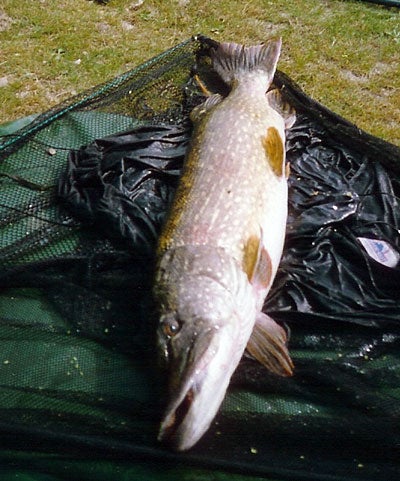MAKING THE MOST OF IT – EXTRA RODS The use of second or third rods is commonplace nowadays, but are we really making the most of them? If you are fishing short sessions then it is vital you use these extra rods to their maximum. Most anglers fish all their rods targeting the same species, for example, three carp rods all rigged and baited for carp, two barbel rods, two tench rods, etc, you get the idea. If this isn’t the case then the second rod is used as a ‘sleeper rod’, this is most often used by pleasure anglers on commercial fisheries and usually consists of a variation on the bolt rig fished in conjunction with an alarm. In this scenario hardly any thought goes into the fishing of this rod, it is a ‘chuck and hope’ rod that might fool a larger than average fish whilst the angler concentrates on their main method, usually a float or pole fished in the margins. I’m not knocking the use of these extra rods; quite the opposite, this little series of three articles has been about getting the most out of the limited time we have on the bank, and the use of extra rods can do this. But with a little lateral thinking the extra rods could be used in a different way that produce fish that turn an ordinary session into something special. For example, in the last couple of weeks of the season I have experimented with fishing two different rods for two different species that complement each other and increase the results on both as a result. On the first occasion I spent a great day’s stickfloat fishing on the Warwickshire Avon, the only difference with this day is that I also fished a deadbait on a paternoster rig that fluttered nicely in the current 20 yards downstream at the tail end of my stickfloat run. As I caught a nice net of silverfish they in turn attracted the predators that took the easy meal offered at the tail end of the swim. The end result was just under 10 lb of roach, dace and chublets, complemented by four pike, the two of which were easily double figures, the largest of which is shown in the picture, not bad for 5 hrs fishing.
The second occasion I used this approach was two days before the end of the season, this time on a huge gravel pit fishing a waggler only twenty yards out. I started catching small 6 oz skimmers immediately which in turn attracted the pike, the first of which took my freelined mackerel tail which had been cast 10 feet to the left of my waggler. After two hours of steadily catching skimmers but no further pike I repositioned my deadbait to halfway between the end of my keepnet and my waggler line, only about 10 yards out. The combination of the continuous stream of skimmers being played in and my keepnet had brought the pike closer in and again they couldn’t refuse an easy meal and another two small jacks took the mackerel tail. The end result after a five hour afternoon session, 15lb of skimmers and three pike, the biggest about 6lb. Not a bad afternoon’s fishing at all. The interesting thing was that on both occasions not once did a pike try to grab a hooked fish or lunge at my keepnet. If it weren’t for the fact I caught a few I wouldn’t have known about their presence at all. If I hadn’t have used the second rod the pike would have at some point raided the shoals of silver fish I was targeting and I would have just thought they had gone off the feed, when I stopped catching. So think about how you use your extra rods in order to maximise their potential. Remember that the techniques and baits we use to catch one species often attract another. Very often they won’t take the hookbait we are using for our intended species but try something different and you might just be surprised. Big beds of bait intended to attract carp, tench or barbel attract all species and the predators that follow them. A waggler or maggot feeder fished as the third rod will often pick up big roach, crucians, dace, etc, that feed with an unknown confidence alongside the larger species. Don’t be blinkered by your initial approach, think about what else you will attract into your swim inadvertently or not, and why not use one of your extra rods to target these fish instead. You may just be surprised. Oh, and don’t forget, to fish three rods (where permitted) you need two licences! |
Welcome!Log into your account












